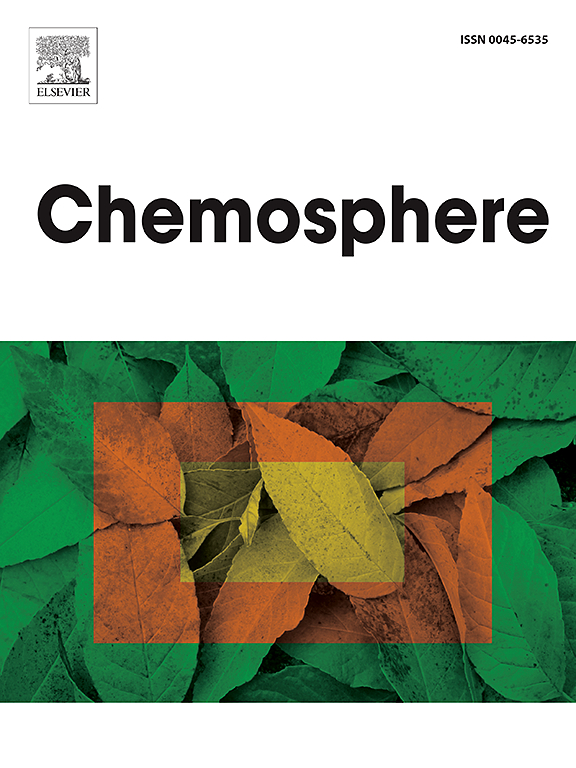Tracing heavy metal migration in stone coal mining watersheds: Insights from coupled SWAT-MIKE21-ECO lab simulations
IF 8.1
2区 环境科学与生态学
Q1 ENVIRONMENTAL SCIENCES
引用次数: 0
Abstract
Heavy metal contamination in riverine systems, particularly in regions affected by historical mining activities, poses significant environmental and health risks worldwide. This study investigates the migration and transformation of heavy metals (Zn, Cd, Ni, and Al) in the Xiaomixigou watershed, an abandoned anthracite coal mine area in Ankang, China, using a novel coupled two-dimensional numerical model integrating SWAT, MIKE21, and MIKE ECO Lab. The scientific novelty of this research lies in the integration of these models to simulate complex heavy metal dynamics in a mining-impacted watershed, providing a comprehensive understanding of pollution sources, transport mechanisms, and spatial distribution. Field sampling and laboratory experiments validated the model, revealing that Al is the most significant pollutant (8.00–9.15 mg L−1), with concentrations decreasing downstream due to sedimentation and dilution. Zn and Ni showed similar trends, while Cd concentrations increased downstream, suggesting potential new pollution sources. The model's ability to simulate unmonitored areas and identify pollution hotspots offers critical insights for targeted remediation strategies. This study advances the field by demonstrating the efficacy of coupled hydrological, hydrodynamic, and water quality models in understanding and managing heavy metal pollution in complex watersheds globally.

追踪石煤开采流域重金属迁移:来自SWAT-MIKE21-ECO耦合实验室模拟的见解
河流系统中的重金属污染,特别是在受历史采矿活动影响的地区,在世界范围内构成重大的环境和健康风险。利用SWAT、MIKE21和MIKE ECO Lab集成的二维耦合数值模型,研究了安康小溪沟流域重金属(Zn、Cd、Ni、Al)在无烟煤废弃地的迁移转化。本研究的科学新颖之处在于将这些模型整合在一起,模拟采矿影响流域重金属的复杂动态,从而全面了解污染源、运移机制和空间分布。现场采样和室内实验验证了该模型,表明Al是最重要的污染物(8.00-9.15 mg L−1),由于沉降和稀释,下游浓度降低。Zn和Ni表现出相似的趋势,而Cd浓度在下游呈上升趋势,提示存在潜在的新污染源。该模型能够模拟未监测区域并识别污染热点,这为有针对性的修复策略提供了关键的见解。本研究通过展示水文、水动力和水质耦合模型在理解和管理全球复杂流域重金属污染方面的有效性,推动了该领域的发展。
本文章由计算机程序翻译,如有差异,请以英文原文为准。
求助全文
约1分钟内获得全文
求助全文
来源期刊

Chemosphere
环境科学-环境科学
CiteScore
15.80
自引率
8.00%
发文量
4975
审稿时长
3.4 months
期刊介绍:
Chemosphere, being an international multidisciplinary journal, is dedicated to publishing original communications and review articles on chemicals in the environment. The scope covers a wide range of topics, including the identification, quantification, behavior, fate, toxicology, treatment, and remediation of chemicals in the bio-, hydro-, litho-, and atmosphere, ensuring the broad dissemination of research in this field.
 求助内容:
求助内容: 应助结果提醒方式:
应助结果提醒方式:


